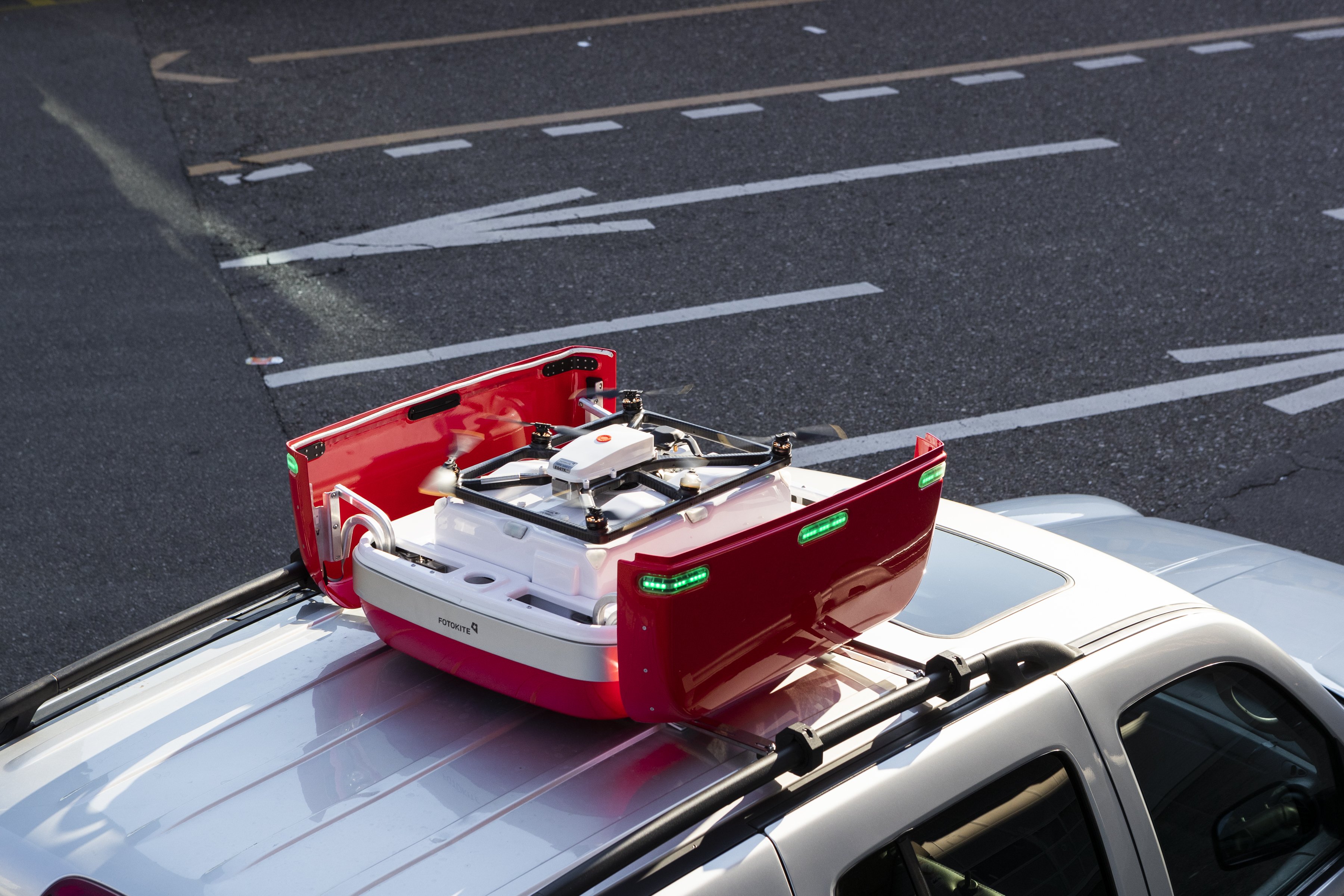Emergency services are increasingly looking to tech to augment first-responders such as emergency dispatch software and early wildfire detection and monitoring. While drones are a common tool in emergency scenarios being used for tactical intelligence, surveillance in the military, a Swiss startup is making drones accessible to first-responders for use in situations like fires and search and rescue operations.
Fotokite is a Zurich-founded company with offices now in Syracuse, New York, and Boulder, Colorado. It builds fully autonomous, persistent, and reliable systems that provide invaluable overview information to firefighters and first responders to help them manage complex, safety-critical situations from fires to volcanic monitoring.
I spoke to Chris McCall, Fotokite's Chief Corporate Development Officer and Chief Revenue Officer, to learn more.
The company spun out of ETH University from its work to develop the ability for a quadcopter or a multicopter to intelligently pull on a cable or a tether and use an estimation of that tether force vector to estimate where it is. This results in a fully autonomous flight in a fully closed loop form. Now, it has customers in places like Los Angeles, London, Paris, and Milan and raised $11 million Series B in April this year, bringing its funding to over $26 million.
As McCall explains, "No piloting, GPS, or computer vision is necessary. You can really do fully edge-based autonomy."
In exploring a variety of commercial and consumer usecases in the rapidly evolving sector, Fotokite discovered that it could deliver core, long-term, defensible, unique value that we could deliver with our unique technology and approach to tethered drones, to firefighters and public safety teams.

Fotokite builds its systems up into the top of fire trucks and up into the top of public safety vehicles so that when first responders show up to a scene, they're literally still in their vehicle, they push a button, and up on top of this box opens up all by itself. From pulling up to the scene, you can deploy the autonomous drone in a mere 15 seconds.
McCall explained that there is " no operator, no joysticks. We do away with all of the hurdles and complications of using a drone that requires you to focus on flying rather than responding."
The Fotokite flies up fully autonomously and starts to stream thermal and regular video down to all the firefighters or other emergency responders on the ground. And it does that without any piloting, without any type of complications to get them that information.
Why use a tethered drone?
McCall sees Fotokit as quite different from untethered drones because a tethered system can incorporate a lot of core redundancy and, therefore, safety that an untethered drone cannot.
One example is power redundancy. You can have a battery upon a free-flying system, but if that battery goes bad or if you have a power failure, what happens? Your system's coming out of the sky.
With Fotokite, drones receive primary power from the ground, from the first responder vehicle. If that vehicle runs out of power and doesn't deliver power up to the system, then the system has a backup battery on board, which kicks in automatically and initiates an automatic landing down into the box.
Its GPS independence makes it particularly well-suited for use in urban areas and urban canyons, where the GPS signal can be inconsistent at best.
No licence to fly
In many cases, untethered drones require a licence or certification to operate legally in places such as Europe and the EU.
Fotokite actively worked with lawmakers in the US and Europe to define a new category of drone, the actively tethered UAS.
Untethered drones can be flown in zero-grid airspaces without a pilot's licence. Even volunteer firefighters can fly these without pilot licences.
It also makes them more accessible, as according to McCall, less than one per cent of all first responders are trained pilots.
Further, tethered systems tend to be a bit more expensive from the perspective of providing ground stations and electronics that are built into that.
However, McCall notes, the company ameliorates this with lower operational costs than untethered drones:
"What we end up seeing is quite a bit of departments that come to purchase Fotokites because they've gone out and they've tried to implement drone programs and then had to deal with complications, and the costs of pilot training and maintaining trained pilots, both on-shift, on-site and available to first responders on duty."
Tethered drones offer uninterrupted power and real-time data transmission

Unlike traditional drones that rely on batteries and radio signals, tethered drones offer a distinct advantage: a continuous power supply and wired data transmission. McCall details:
"We not only send power up the tether, but we also send data. So the full video pipelines from both the thermal and regular video and all of the controls are handled over the actual tether cable itself.
As a result, you have basically an ethernet, a gate connection between the kite and the ground station where quite a bit of computing power is implemented."
This effectively creates a wired connection, like a permanent ethernet cable tethered to the sky. The system bypasses limitations of radio signals and data rates altogether. It can directly access the sensor data and process it on the ground.
"I can't think of many truly edge-deployed robotic systems that are used daily in such an uncontrolled environment by operators that aren't drone or robotic specialists.
They're firefighters. It's a battalion chief, an assistant chief. Or a sergeant operating these things as a value-add in their life-saving activities."
Fotokite represents a significant leap forward in public safety technology, empowering firefighters and first responders to focus on what matters most – saving lives.
Lead image; Fotokite. Photo: uncredited.



Would you like to write the first comment?
Login to post comments